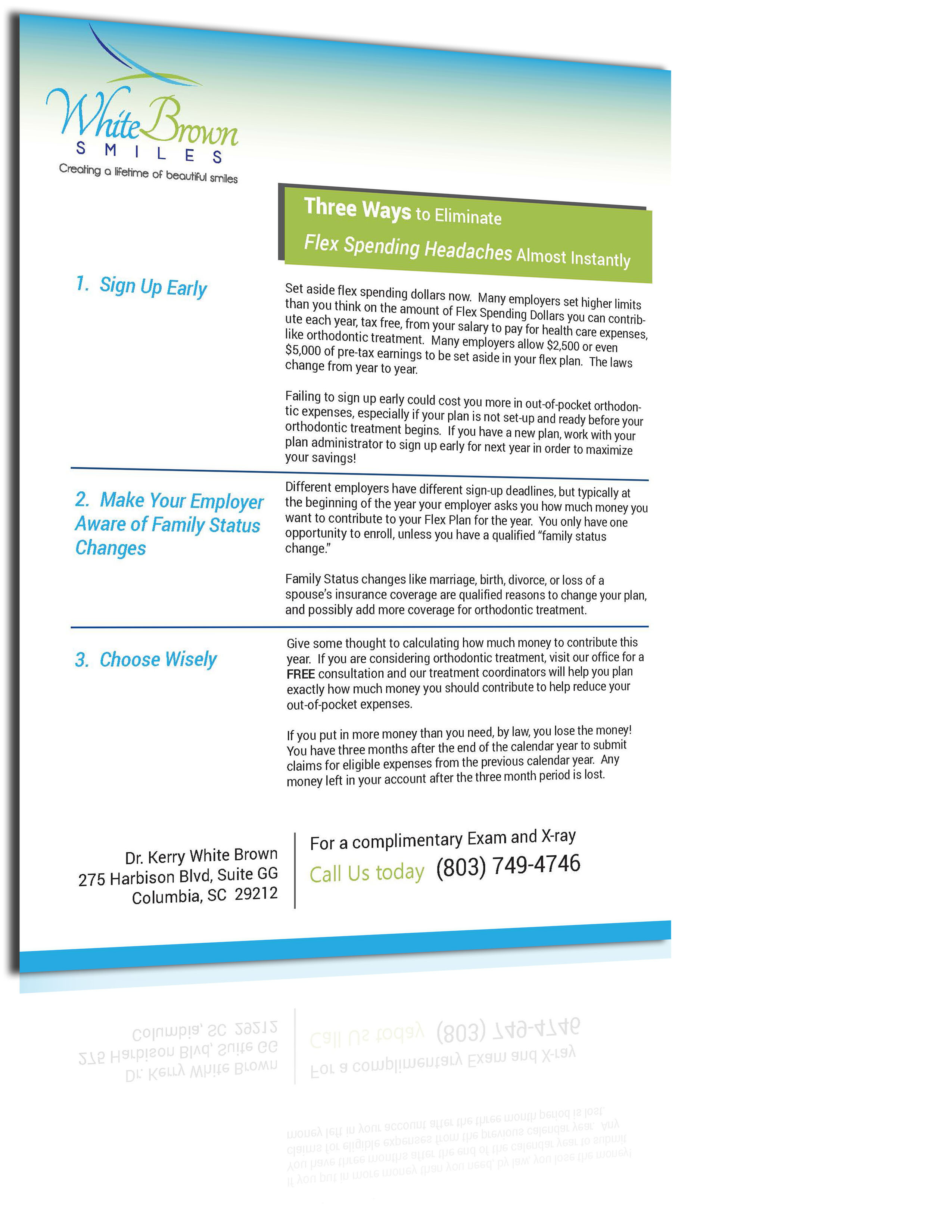How Do I Pay for Braces?
Like any major dental or even medical procedure, orthodontic procedures can cost several thousand dollars, not all of which is covered by your insurance (depending on the plan; see below).
How much you may have to pay out of pocket depends on the type of procedure and, of course, the specifics of your insurance policy. One way many of my patients pay for their procedures is by utilizing the benefits of what is known as “Flex Spending,” where an account through their work can be used to pay for braces with pre-tax dollars.
How can you make the most of your employer’s Flex Plan so that the amount out of your pocket is reduced to a more manageable figure? Here are three solutions you can take action on starting today:
How to Eliminate Flex Spending Headaches
The First Way: Sign Up Early
Preparation is key to success in any endeavor. So to make the most of your Flex Plan,set aside your flex spending dollars now. Many employers set higher limits than you think on the amount of Flex Spending Dollars you can contribute each year, tax-free, from your salary to pay for health care expenses like orthodontic treatment.
Case in point: Many employers allow $2,500 or even $5,000 of pre-tax earnings to be set aside for your flex plan. Are you getting all of that money you can to pay for your child’s orthodontic care?
Maybe; maybe not. Failing to sign up early could cost you more in out-of-pocket orthodontic expenses, especially if your plan is not set up and ready before your child’s orthodontic treatment begins. If you have a new plan, work with your plan administrator to sign up early for next year in order to maximize your savings!
The Second Way: Make Your Employer Aware of Family Status Change
Different employers have different sign-up deadlines for the Flex plans, but typically at the beginning of the year, your employer asks you how much money you want to contribute to your Flex Plan for the year.
The problem with making annual decisions about your healthcare coverage is that you only have one opportunity to enroll, unless you have a qualified “family status change.”
So what, exactly, IS a “family status” change? Family Status changes like marriage, birth, divorce or loss of a spouse’s insurance coverage are qualified reasons to change your plan, and possibly add more coverage for orthodontic treatment.
The Third Way: Choose Wisely!
Finally, give some thought to calculating how much money to contribute to your flex plan at work this year. If you are considering orthodontic treatment, visit your doctor’s office for an initial consultation.
Your treatment coordinator(s) can help you plan exactly how much money you should contribute to help reduce your out-of-pocket expenses when it’s time to actually pay for, and receive, the procedure.
Here’s something you may not know about your friendly flex plan: If you put in more money than you need, by law, you lose the money! You have three months after the end of the calendar year to submit claims for eligible expenses from the previous calendar year. Any money left in your account after this three month period is lost.
Does My Insurance Cover Braces?
These days there are as many different types of insurance plans as there are patients in my office. I can’t possibly speak to your unique and personal insurance policy without seeing it first but, in general, my experience tells me that “most” insurance policies cover “some” of your orthodontic expenses.
I realize that answer sounds very vague but here are a couple of variables you need to answer before an insurance agent can help you determine what, how long and how many procedures fall under your insurance:
- The type of procedure (braces, Invisalign, etc.)
- The duration of the procedure (two months, six months, a year, etc.)
- The cause of the procedure (a patient presenting with pain, a parent’s concern, traumatic injury or accident, congenital birth defect like cleft lip or palate etc.)
- The nature of the procedure (to correct pain/discomfort, cosmetic, etc.)
- Etc.
My point is, this one question I can only partially answer, but here is one thing I’m certain of: talking to your insurance agent will help you get the right answers you need.
 TIP : keep an insurance journal of every interaction with your carrier. Write down the date, time of call, name of the person you contacted, and the exact instructions or recommendations following the call. Later, if your insurance company doesn’t remember what they told you, you’ll have it accurately written down. If they still don’t remember, ask them to pull the recorded audio tape from your previous call, so that you can accurately “remind” them of exactly what they told you.
TIP : keep an insurance journal of every interaction with your carrier. Write down the date, time of call, name of the person you contacted, and the exact instructions or recommendations following the call. Later, if your insurance company doesn’t remember what they told you, you’ll have it accurately written down. If they still don’t remember, ask them to pull the recorded audio tape from your previous call, so that you can accurately “remind” them of exactly what they told you.

